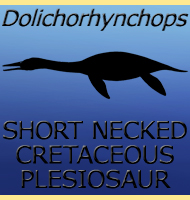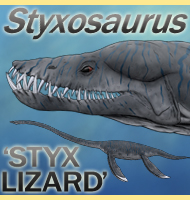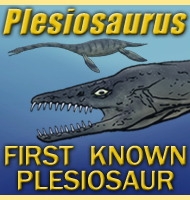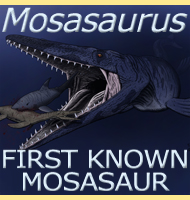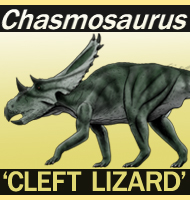


Eopolycotylus
Name:
Eopolycotylus
(Dawn Polycotylus).
Phonetic: E-oh-pol-e-cot-e-lus.
Named By: L. B. Albright, D. D. Gillette
& A. L. Titus - 2007.
Classification: Chordata, Reptilia,
Sauropterygia, Plesiosauria, Polycotylidae, Polycotylinae.
Species: E. rankini (type).
Diet: Piscivore/Carnivore.
Size: Unavailable.
Known locations: USA - Utah - Tropic Shale
Formation.
Time period: Turonian of the Cretaceous.
Fossil representation: Almost complete individual.
Eopolycotylus
is another example of one of the short necked/long jawed polycotylid
plesiosaurs
of the Cretaceous era. The genus name Eopolycotylus
means ‘Dawn Polycotylus’ and is a reference
to the earlier
appearance of Eopolycotylus in the fossil record to
Polycotylus,
the
type genus of the Polycotylidae. The type species name honours David
O. Rankin who discovered the type specimen in 2001.
The
long jaws and needle-like
teeth of Eopolycotylus indicate that it was a
hunter of fish and
possibly other small marine organisms. Eopolycotylus
itself however
may have been prey to large Cretaceous era pliosaurs
such as
Brachauchenius
which is also known from the Tropic Shale Formation.
Another polycotylid plesiosaur from this formation that was also named
in the same year as Eopolycotylus is Palmulasaurus.
Further reading
- Plesiosaurs from the Upper Cretaceous (Cenomanian-Turonian) Tropic
Shale of southern Utah, part 2: Polycotylidae. - Journal of Vertebrate
Paleontology 27(1):41-58. - L. B. Albright, D. D. Gillette & A.
L.
Titus - 2007.
----------------------------------------------------------------------------
Random favourites
 |
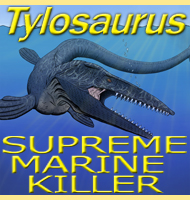 |
 |
